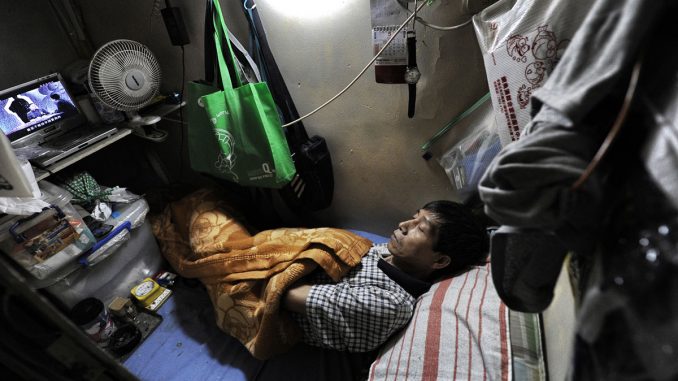
Millions of residents in Hong Kong are being forced to live in inhumane conditions, with some of them living in tiny ‘coffin homes’ as the housing crisis in the city worsens.
As rents soar, citizens are being forced to downsize their homes and live in 20-square-foot cages with barely enough space to lie down in.

BYPASS THE CENSORS
Sign up to get unfiltered news delivered straight to your inbox.
You can unsubscribe any time. By subscribing you agree to our Terms of Use
Latest Video
The United Nations has stepped in and declared the crisis “an insult to human dignity,” as experts claim that the impact of living in such conditions could have serious mental health consequences.
“They don’t even have enough room to stretch their legs, and such tight spaces may have many psychological and social impacts,” social worker Sze Lai Shan told the Daily Mail.
Rt.com reports:
Over the past five years, rental prices in one of Asia’s wealthiest cities have increased nearly 50 percent, reaching an all-time high. The average price per square foot in Hong Kong is slightly lower than New York City, hovering at around $1,380.
#China sets course to defeat poverty by 2020 http://t.co/WtgVEmCwWX pic.twitter.com/JULxaSHyec
— RT (@RT_com) October 13, 2015
Hong Kong was recently named as the most unaffordable major housing market in the world.
Officials acknowledge the housing problem and have pledged to build 280,000 additional public homes and 180,000 private homes by 2027.
Hong Kong’s chief executive, Leung Chun-ying, has called the housing crisis “the gravest potential hazard” to society, as only seven percent of the city’s land is zoned for housing.
China has more billionaires than US: Number growing despite 20% drop in domestic stock markets & economic slowdown https://t.co/nZvODNGbi8
— RT (@RT_com) October 14, 2016
Those who can’t afford the sky-high rents turn to alternative housing like coffin homes. They say “it’s impossible for them to save” and “there’s nothing you can do about it.”
The latest government figures show 1.34 million people living below the official poverty line in 2015, which is the highest number since 2009.
The tiny homes with living space of just 2 meters by 1.3 meters and an average rent of $250 offer significant savings. Most of these so-called “homes” are cubicles, rather than the cages that dominated the market several years ago.
The government estimates 200,000 people are living in such homes, but community organizations claim the number is much higher.


